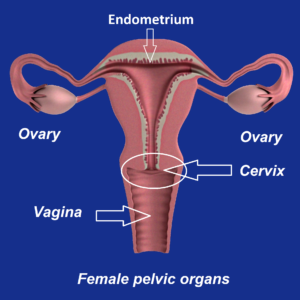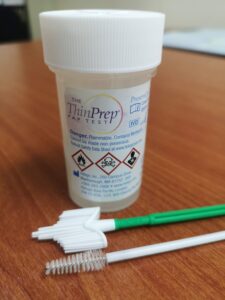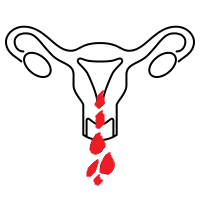 Loop electrosurgical excision procedure (LEEP), also known as large loop excision of the transformation zone (LLETZ), is a procedure for further diagnosis and treatment of cervical intraepithelial neoplasia (CIN). CIN lesion is an abnormal growth in the cervix. The CIN lesion is usually diagnosed during a routine Pap smear (or called Thin Prep) test. LEEP is a very safe way to remove abnormal tissue from the cervix that might otherwise progress to cancer. It minimizes the amount of tissue removed in order to preserve childbearing ability.
Loop electrosurgical excision procedure (LEEP), also known as large loop excision of the transformation zone (LLETZ), is a procedure for further diagnosis and treatment of cervical intraepithelial neoplasia (CIN). CIN lesion is an abnormal growth in the cervix. The CIN lesion is usually diagnosed during a routine Pap smear (or called Thin Prep) test. LEEP is a very safe way to remove abnormal tissue from the cervix that might otherwise progress to cancer. It minimizes the amount of tissue removed in order to preserve childbearing ability.
Reason for the procedure
• Presence of CIN lesions from the colposcopy evaluation and confirmed via cervical biopsy. Some types of CIN can progress to cervical cancer if not treated. This can be used as a treatment for CIN lesions.
• Unsatisfactory colposcopic evaluation whereby the whole transformation zone cannot be visualized or the cervix appeared abnormal and requires a bigger tissue specimen for a more accurate diagnosis to exclude cancer changes.
Description of the procedure
• The LEEP procedure can be done as outpatient or as a daycare procedure. It will be scheduled when you are not having your menses.
• An injection will be given into the cervix for local anesthetic and also to reduce bleeding during and after the procedure. The abnormal portion of the cervix is removed with a thin wire loop carrying a small electrical current. The loop is used to scoop out the abnormal tissue in one piece and to seal any bleeding blood vessels.
• You may feel a slight tingling or some lower abdominal cramping or vaginal discomfort after the procedure.
• The procedure usually takes only about 10 to 15 minutes.
• The removed tissue is sent to a lab for histological confirmation.
Post procedure care
• Analgesics will be given and you should take it if in pain or discomfort.
• Antibiotics may be given to prevent or treat infection.
• A vaginal discharge is expected following the procedure and some light vaginal bleeding may occur. This is a normal part of the healing process. Your cervix should heal completely within a month.
• You should shower as usual but do not douche. Use pads (not tampons) for 2-3 weeks.
• The first Thin prep smear is performed at about 4 to 6 months after the LEEP procedure. Your doctor will discuss with you the subsequent follow up schedule for Thin prep with you. This will depend on the histology of the LEEP and the findings of the subsequent smears.
• You can return to your normal daily activity as soon as possible, including light exercises. However, you should avoid sexual intercourse or swimming for 3-4 weeks.
• There is no specific dietary restriction.
Expected outcome
This will depend on the extend of the abnormal areas and the severity. Sometimes, the abnormal tissues may not be totally removed and will be reported in the histology report as involvement of the surgical margins. Further management will depend on the severity of the lesions and the age of the patients and any further desire for pregnancy
Possible Complications
• Bleeding is the main complication of a LEEP procedure. Serious bleeding may require prolonged observation, or even stitches. Sometimes, the bleeding may only occur several days after the procedure and you should keep a lookout for this even when you are at home.
• Some scarring, narrowing or thinning of the cervix may occur, which could potentially affect a woman’s future fertility. The tissue of the cervix may be weakened. Subsequent pregnancies are at risk for incompetent cervix and premature birth. All these are risks are usually higher with the cold knife cone biopsy and are uncommon with a LEEP procedure.
SEE YOUR DOCTOR IMMEDIATELY IF YOU HAVE:
• Increased pain in the lower abdomen or in the genital area.
• Signs of infection: headache, muscle aches, dizziness or general ill feeling and fever.
• Persistent or heavy vaginal bleeding, with clots or continuous heavy flow.
• Persistent and abnormal vaginal discharge.
To print a pdf copy, click HERE
[mailerlite_form form_id=3]







